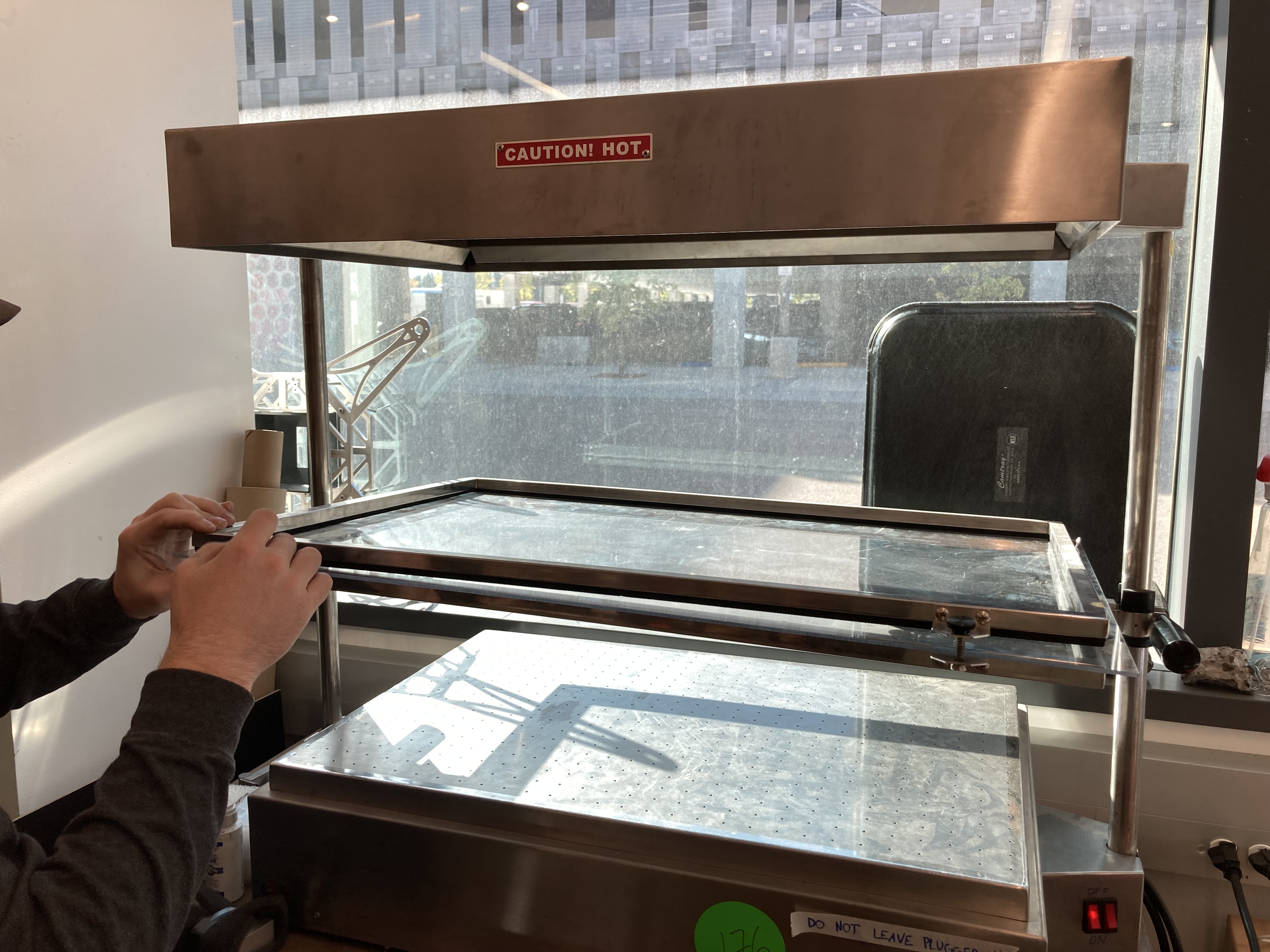Plastic Processes
Vacuum Forming:
The vacuum forming process involves heating a thermoplastic sheet until it is pliable, then lowering it down over a form on a vacuum table. The sheet is left on the vacuum table as it cools and hardens into the shape of the form. The resolution of the final part can depend heavily on the geometry of the mold as well as the thickness of the plastic sheet. Details on horizontal surfaces as thin as stickers on flat metal plates can be transferred to the plastic, while details on vertical walls are unlikely to come out as the draped plastic will not form closely to the vertical wall.
The Makerspace stocks sheets for vacuum forming. Make sure the plastic is approptiate for the process, as some produce less than desirable results!
- Load your forming blocks onto the vacuum forming table
- Attach the vacuum hose to the vacuum port on the rear of the forming table
- Put the plastic sheet into the clamp and tighten the thumb screws, make sure it is supported on all sides
- Plug in the vacuum former's plugs to two different outlets
- Using the black handles, raise the plastic sheet to the top of the rails, close to the heating elements

- Turn both red power switches to the on position to turn the heating elements on
- Wait for the plastic sheet to start sagging by about 5-6" from the frame
- Turn on the vacuum
- With a friend helping, smoothly lower the plastic over the buck on the vacuum bed
- Once the form is completed, turn off the vacuum and heating elements
- Let the plastic cool for about 3 minutes before removing it from the table and bucks. A mallet may be helpful to remove the forms
- Use a band saw to cut the shapes out of the full sheet
Injection Molding:
Injection molding uses pressure to push plastic pellets through a heater chamber into a mold. The makerspace has a small injection molding machine which can be used in conjunction with other subtractive processes to create a mold to be used in the injection machine.
